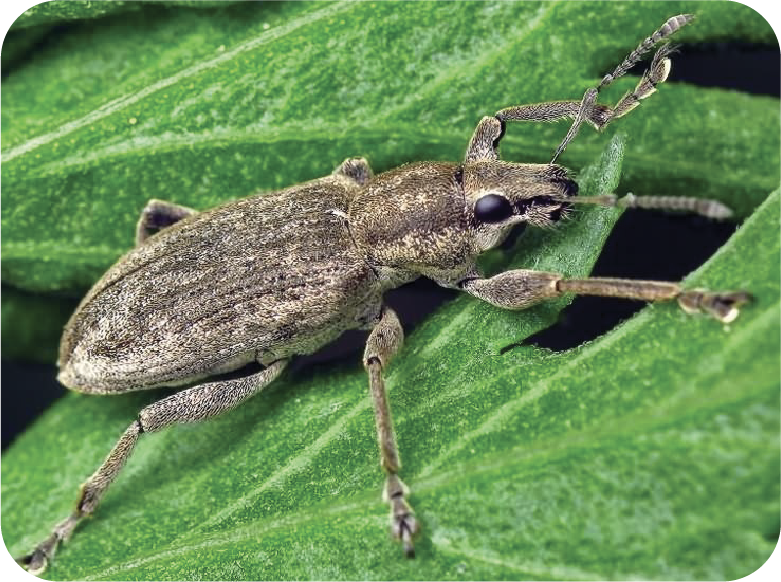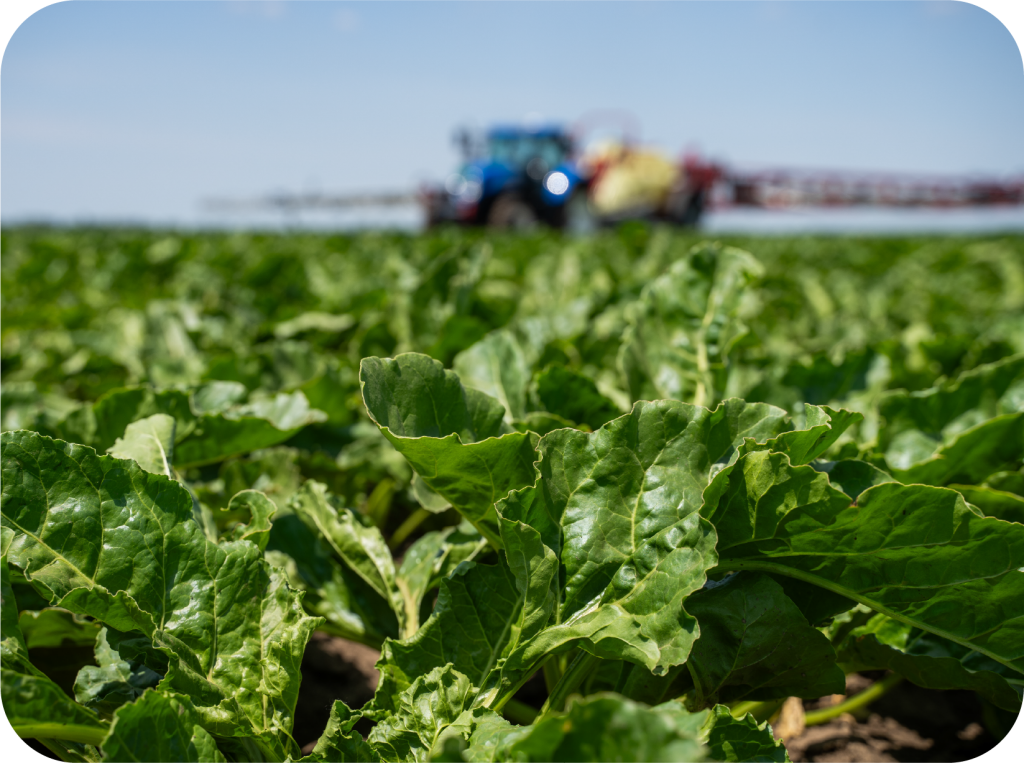
BEET AND CORN PIPE
The common beet weevil overwinters as an imago in old beet fields at a depth of 20-35 cm. In spring, the imago appears when the soil temperature is between 6 and 10°C at a depth of 5-10 cm, and the air temperature is between 15 and 25°C.
At the beginning, when the air temperature is up to 20°C, the imagos cannot fly, but as the air temperature rises further, the weevil takes flight. After overwintering, the imagos are sexually immature and feed on young sugar beet plants to form sexual elements.
Producers are advised to take several preventive measures to protect crops from this pest:
• Crop rotation – spatial isolation
• Early sowing, using seeds with higher germination energy to promote earlier and faster growth through sensitive stages
• Sowing trap strips – densely sown beets at the edges of new beet fields
• Digging trap ditches first around old beet fields, and then around new fields, which should be treated with appropriate insecticides as needed
• Daily monitoring of sugar beet fields during the warmest part of the day.
In the coming days, it is necessary to monitor the activity of the corn weevil on the sprouted beets, especially expecting it in plots where corn was the preceding crop. As temperatures rise, intensively inspect the beet fields during the germination and emergence stages, as well as the sprouted beets during the warmest part of the day when the activity of the common beet weevil is highest. If its population exceeds 1 individual per 10 m², it should be controlled using a combination of lambda-cyhalothrin and acetamiprid.
In fields where corn was the preceding crop, the corn weevil is present and can significantly damage the beet crop. If there are 3 out of 10 damaged plants, treatment is necessary (with the aforementioned preparations).

SOIL COMPACTION
Optimal conditions for the growth and development of the root system, which is particularly important for sugar beets, require an ideal ratio of 1/3 soil particles, water, and air. Agricultural mechanization has enabled the replacement of human labor and an enormous increase in labor productivity; however, it has also led to a serious problem of soil compaction and the disruption of the ideal balance among these three elements, to the detriment of water and air.
Neglecting the fundamental resource of agricultural production and the primary source of income in Vojvodina – soil – is the cause of numerous problems in production, the emergence of various diseases, and the inability to achieve yields comparable to those of European producers.